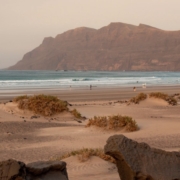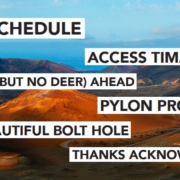Many visitors are surprised to discover there are hedgehogs on Lanzarote – they seem to belong to cooler, wetter climes – but these spiky specimens are one of the few wild mammals on the island and one of the most successful.
The hedgehog found on Lanzarote is the North African hedgehog (Atelerix algirus), which is native to Spain and mediterranean Africa. It’s smaller than the European hedgehog that lives further north, with a longer snout and legs, which allow it to scuttle along at a fair old lick.
Hedgehogs are not native to the Canaries. They don’t exist in the fossil record, and it’s thought that they were brought to the island from the African mainland. A pair were brought to Fuerteventura in 1896, and hedgehogs were first observed in Tenerife in 1903.
Since then, they have developed into a distinct sub-species found on Lanzarote, Tenerife, Gran Canaria and Fuerteventura. Hedgehogs do well on the island, as they are tough little customers with few natural predators.
They can be found in all parts of Lanzarote. Those living in rural areas are usually aware of hedgehogs in the vicinity, but we’ve also observed a family of hedgehogs living in a wall in central Arrecife.
Hedgehogs are nocturnal, foraging for food after dark, when their noises can be surprisingly loud. It is these grunts and squeaks, along with their snout, that explains the “hog” part of their English name.
Unlike European hedgehogs, the North African variety does not hibernate, as the weather is warm enough all year round to guarantee a steady source of food. They usually breed in the summer, raising one or two litters of two or three hoglets. The babies are virtually helpless for a few weeks, remaining in their nest while the mother suckles them.
The main threat to hedgehogs is traffic – squashed hedgehogs can often be seen on the island’s roads – and dogs will sometimes also worry hedgehogs, sometimes killing them. However, although cats often try and attack hedgehogs, the adults can generally look after themselves, curling up into a tight ball covered in 2-centimetre spines.
Hedgehogs are omnivores, eating insects, snails, small lizards, grubs and berries, if they can find them. They’re also veteran raiders of certain cat feeding stations on the island.
In most cases, if you find a hedgehog the best thing is to leave it alone. However, if it is injured or in distress, put it in a carboard box and contact the island’s wildlife service on 696 73 31 77. It’s probably not a great idea to let it indoors, as hedgehogs are often infested with fleas, and if you do want to feed hedgehogs, cat food is a good idea. A little water is always welcome on Lanzarote, too.
HOG CALLING
In Spain, hedgehogs are called erizos, a word that derives from the old Latin word ericius and refers to bristles or spikes. In German, the ancient word Igel is used for hedgehogs, while the Irish word grainneog means “little ugly one”.
While the native English word “hedgehog” is now widely used in the UK, the original name, “urchin” is still used in some parts of northern England and survives in the name for those spiky sea creatures called sea urchins. Untidy little boys were called urchins because their hair was often as spiky as a hedgehog.











Leave a Reply
Want to join the discussion?Feel free to contribute!